Postwar Dreams of Flying in Style
The Northrup Flying Wing promised a luxurious experience for the air traveler of tomorrow
![]()
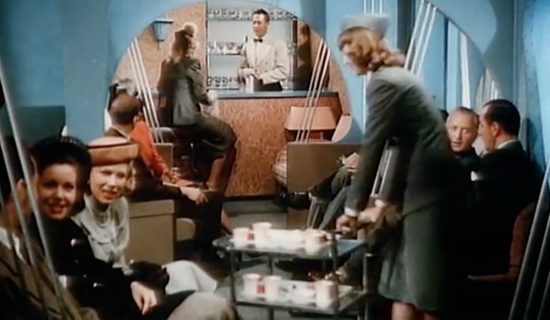
Interior of the Northrop airplane of tomorrow (1948)
During World War II, many Americans had high hopes for what life would be like in the future. Sometimes this was fueled by advertisers who promised that great things were just around the corner. Sacrifice for your country now they said, and all of your wildest high-tech dreams would come true after the war. As we’ve seen before, this attitude was sometimes tempered by skeptics who warned that while there may indeed be great things ahead, Americans should keep their shirts on.
Once the war ended in 1945 inventors, corporations and advertisers kicked into high gear, scrambling to perhaps make good on some of the promises they’d made during the war. But that also didn’t stop the unrelenting torrent of predictions about the leisurely society of tomorrow.
One popular area of prognostication was about how people would be traveling in the near future. The average American would soon be taking to the skies, in hyper-futuristic airplanes with all the luxuries of a swanky dinner club. One of these skyward-gazing predictions appeared in a 1948 short film called The Northrop Flying Wing, produced for the Popular Science series of films. Designed by Jack Northrop, Northrop’s sleek design screamed “airplane of the future.”
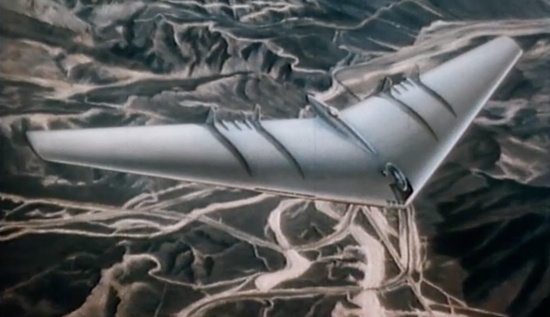
Rendering of a futuristic airplane from a Popular Science newsreel (1948)
The film explained that this airplane of the future would seat 80 people and provide gorgeous views of the countryside below through large plexiglass windows:
Now a preview of the flying wing transport of tomorrow. The mid-section provides ample room for 80 passengers. Spaciousness keynotes the luxurious main lounge, extending 53 feet inside the wing. And future air travelers will really see something. Through the plexiglass windows of the front wing edge, passengers have an unimpaired view of the earth unrolling thousands of feet below. Coast-to-coast flights in four hours may not be far away.
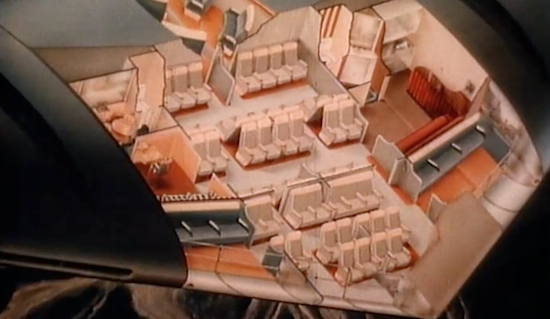
Illustration of the airplane of the future in cut-away (1948)
This high-tech flyer had its roots in the military, the film tells viewers, but much like other advancements of WWII, the Northrop-built planes held tremendous promise for peacetime uses:
Wing controls are like those of a conventional plane, except for elevons, combining functions of elevator and aileron. Today a potent defense weapon, it may revolutionize commercial flying. The dorsal tip of the plane provides an excellent vantage point to see the world go by. Snug as bugs in their magic carpet, air travelers can look down on mere earthlings as the double-quartet of mighty turbo jets whistle them through space.
This flying wing bomber is the twelfth type to be designed by John K. Northrop since 1939 — the latest edition to a family of planes that may some day may rule the air.
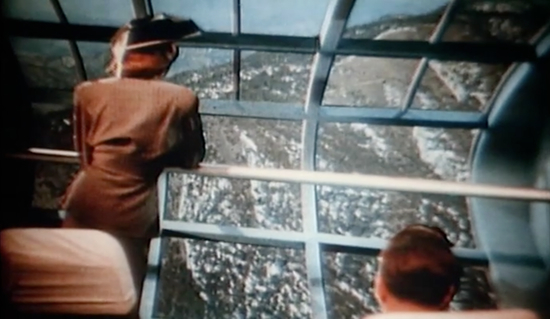
View from the interior of the futuristic Northrop plane (1948)
The world of air travel in the future will be one of luxury and efficiency, with plenty of booze for good measure:
Surprisingly enough, the luxurious wing is simpler to build than other planes. Being a single unit with a structure extending from tip to tip. The sleek air leviathan carries more cargo farther, faster with less fuel than any comparable plane.
And the bar will raise the spirits who don’t feel high enough in the stratosphere. The flying wing has the stability of a fine club and refreshments can safely be wheeled in. This new device is an electromagnetic table holder.
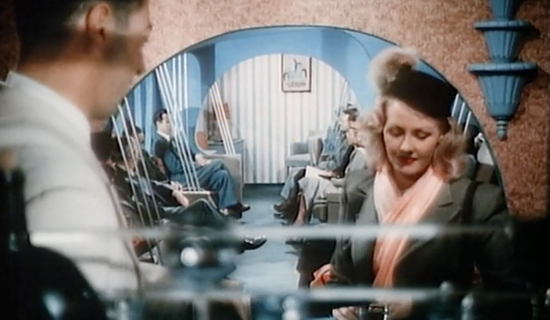
Airplane bar of the future from a Popular Science newsreel (1948)
By the end of the short film the narrator has adopted a strangely paternalistic tone about technology. We’re told that the American public “quickly accepts” the fantastic miracles bestowed upon them by science:
The public quickly accepts all the miracles that science provides. Even skyliners like this will become commonplace. But the giant flying wing is more than a super-streamlined airplane. It is the fulfillment of scientific vision, and symbolizes the practical dreams of science for our world of tomorrow.
Viewers of the late 1940s are told that thanks to science, the world of tomorrow will be the fulfillment of a glorious vision — whether they like it or not.
/https://tf-cmsv2-smithsonianmag-media.s3.amazonaws.com/accounts/headshot/matt-novak-240.jpg)
/https://tf-cmsv2-smithsonianmag-media.s3.amazonaws.com/accounts/headshot/matt-novak-240.jpg)